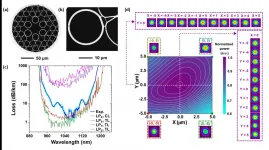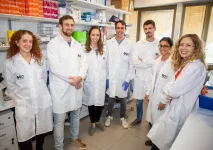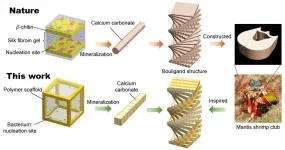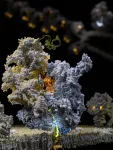Advancing understanding of hop genome to aid brewers, medical researchers
2021-02-22
(Press-News.org) CORVALLIS, Ore. - Oregon State University and U.S. Department of Agriculture researchers have significantly expanded the understanding of the hop genome, a development with important implications for the brewing industry and scientists who study the potential medical benefits of hops.
"This research has the unique ability to impact several different fields," said David Hendrix, an associate professor in the Department of Biochemistry and Biophysics and the School of Electrical Engineering and Computer Science at Oregon State. "If you're talking to beer drinkers, they will be excited about the brewing side. If you are talking to the medical field, they are going to be excited about the pharmaceutical potential."
The findings are outlined in a paper just published in the journal The Plant Genome. Hendrix and John Henning, a hop geneticist with the U.S. Department of Agriculture who has an appointment in the Oregon State College of Agricultural Sciences, are co-corresponding authors of the paper.
Demand for hops has surged in recent years as the craft beer industry has grown, fueled by beers, such as India pale ales, that are brewed with a lot of hops. This has led brewers to seek out new varieties of hops. With a better understanding of the hop genome, scientists will have an easier time developing new varieties, which may have qualities such as different flavor profiles or resistance to diseases that infect and damage hop plants.
"This really opens the door wide for breeding hops at the molecular level," Henning said. "We now have a much better understanding of how traits are being controlled and what genes are involved."
Compounds founds in hops are also increasingly of interest to medical researchers. For example, scientists at Oregon State have shown that xanthohumol, a natural flavonoid found in hops, may aid in combating cancer and metabolic syndrome. Knowing more about hop genes and how they are regulated creates potential for better understanding how compounds are produced and finding other hop compounds that could improve people's health.
Hops are part of the Cannabaceae family of plants, which also includes hemp and marijuana. In the just-published paper, the Oregon State researchers found gene structures in the hop genome that were similar to cannabidolic acid synthase, or CBDAS, which produces the precursor structure to CBD, the compound in cannabis plants that has surged in popularity in recent years because of its potential health benefits.
The Oregon State researchers stressed that their finding doesn't necessarily mean that hops produce CBDA, but it raises questions about the potential to identify new genes involved in the production of different compounds associated with flavoring or therapeutic benefit, and the potential to uncover new compounds in hops.
The researchers sequenced the genome of Cascade, a hop cultivar developed by USDA Agricultural Research Service in the 1960s and credited with helping to launch the craft beer movement. It is the second most widely grown hop variety in the United States today.
The United States is the top hop producing country in the world and Washington, Oregon and Idaho account for nearly all the hop acreage in the United States. In 2019, production of hops in the United States was worth more than $600 million.
Other scientists have attempted to sequence the hop genome, but they have had limited success because it is large - similar in size to the human genome - and complex, Hendrix said. The current research was made possible in part by new genome sequencing and assembly technology developed by Pacific Biosciences of California.
"The previous genomes were basically broken up," Hendrix said. "They were sequencing a lot of the genes, but they were isolated islands of the genome and they were not really getting the full context of what was going on in those islands. We were able to reveal a more complete and continuous genomic sequence."
INFORMATION:
In addition to Hendrix and Henning, the lead author on this paper was Lillian K. Padgitt-Cobb and co-authors of the paper are: Jackson Wells, Brent Kronmiller, Justin Elser and Pankaj Jaiswal, all of Oregon State; Daniel Moore of USDA Agricultural Research Service; Sarah B. Kingan, Gregory Concepcion, Paul Peluso and David Rank, all of Pacific Biosciences of California.
Funding for the sequencing was provided by Pacific Biosciences of California and Sierra Nevada Brewing Company. The research was also supported by funding from the U.S. Department of Agriculture.
[Attachments] See images for this press release:
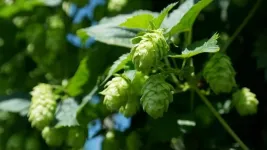
ELSE PRESS RELEASES FROM THIS DATE:
2021-02-22
CORVALLIS, Ore. - Scientists at Oregon State University and the U.S. Forest Service have demonstrated that DNA extracted from water samples from rivers across Oregon and Northern California can be used to estimate genetic diversity of Pacific salmon and trout.
The findings, just published in the journal Molecular Ecology, have important implications for conservation and management of these species, which are threatened by human activities, including those exacerbating climate change.
"There has been a dearth of this kind of data across the Northwest," said Kevin Weitemier, a postdoctoral fellow at Oregon State and lead author of the paper. "This allows us to get a quick snapshot of multiple populations and species all at once."
In addition to demonstrating ...
2021-02-22
CORVALLIS, Ore. - Desert bighorn sheep in the Mojave National Preserve in California and surrounding areas appear to be more resilient than previously thought to a respiratory disease that killed dozens of them and sickened many more in 2013, a new study has found.
Clint Epps, a wildlife biologist at Oregon State University, and several co-authors, found that exposure to one of the bacteria associated with the disease is more widespread among bighorn sheep populations in the Mojave, and that its presence dates further back, than scientists thought. But they also found that the overall number of infected bighorn has declined since 2013 in the populations surveyed.
Epps and his colleagues, including Nicholas Shirkey, an environmental scientist with ...
2021-02-22
Recent spotlights on IC-HCPCFs are due to the recently demonstrated outstanding ultralow-loss performances and their application capabilities. Nevertheless, while their attenuation achieves impressive figures, the challenge of accomplishing a low loss, single-mode (SM), and polarization-maintaining HCPCF perseveres.
In a new paper published in Light: Science & Applications, a team of scientists, led by Professor Fetah Benabid from the University of Limoges, France, and in collaboration of the University of Modena, Italy and the company GLOphotonics, proposed and ...
2021-02-22
CORVALLIS, Ore. - Dogs synchronize their behavior with the children in their family, but not as much as they do with adults, a new study from Oregon State University researchers found.
The findings are important because there is a growing body of evidence that dogs can help children in many ways, including with social development, increasing physical activity, managing anxiety or as a source of attachment in the face of changing family structures, the researchers said. Yet, very little research has focused on how dogs perceive and socially engage with children.
"The great news is that ...
2021-02-22
In the course of a new and groundbreaking study, led by Dr, Natalia Freund and the doctoral candidate Avia Waston at the Sackler Medical Faculty, the research group succeeded in isolating monoclonal antibodies, which hindered the growth of tuberculosis germs in laboratory mice. The antibodies were isolated from a patient who had succumbed to active tuberculosis disease but had since recovered. This is, in fact, the first time in history that researchers have managed to develop a "biological antibiotic" and demonstrate that human monoclonal antibodies can act as a substitute for the traditional chemical antibiotics and protect mice from pathogenic bacterial challenge. The study was carried out in a collaboration with two additional laboratories from the US ...
2021-02-22
At the heart of most electronics today are rechargeable lithium-ion batteries (LIBs). But their energy storage capacities are not enough for large-scale energy storage systems (ESSs). Lithium-sulfur batteries (LSBs) could be useful in such a scenario due to their higher theoretical energy storage capacity. They could even replace LIBs in other applications like drones, given their light weight and lower cost.
But the same mechanism that is giving them all this power is keeping them becoming a widespread practical reality. Unlike LIBs, the reaction pathway in LSBs leads to an accumulation of solid lithium sulfide (Li2S6) and liquid lithium polysulfide (LiPS), causing a loss of active material from the sulfur cathode (positively charged electrode) and corrosion of the lithium ...
2021-02-22
In civil engineering, flexural beams are used to control the effect of vibrations that can cause cracks to appear in surfaces (concrete slabs) and beams. This is particularly important in buildings that require high tensile strength and where the use of machinery can cause a lot of vibrations that can disturb structural integrity. One metric to determine the reliability of beams is the deflection value, which should be appropriately low relative to the structure the beams are used in. Engineering codes such as ACI codes include provisions for such values and there are a number of methods to calculate them. Deflection is altered practically by reinforcing the construction materials with concrete or steel.
In this review, engineers ...
2021-02-22
Biological systems can harness their living cells for growth and regeneration, but engineering systems cannot. Until now.
Qiming Wang and researchers at the USC Viterbi School of Engineering are harnessing living bacteria to create engineering materials that are strong, tolerant, and resilient. The research is published in Advanced Materials.
"The materials we are making are living and self-growing," said Wang, the Stephen Schrank Early Career Chair in Civil and Environmental Engineering and assistant professor of civil and environmental engineering in the ...
2021-02-22
An international collaboration among researchers from Finland, Sweden, UK and the USA has captured ribosomes translating messenger RNA expressed from the maternally inherited mitochondrial genome. Utilising the latest advances in cryo-electron microscopy, the group discovered a novel mechanism that mitochondrial ribosomes use for the synthesis and delivery of newly made proteins to prevent premature misfolding. Disruptions to protein folding can lead to devastating human diseases.
There is a familiar saying, "It's all in the genes". As modern archaeology reveals, the DNA that encodes genes can be found among the remnants of our ancestors and from any organism, small and large, that once roamed the earth. The genetic blueprint alone is ...
2021-02-22
According to a research conducted by JCDR, at least 9 out of 10 adults suffer from low health literacy in India. Health literacy is a vital aspect of any nation's growth - be it developed, underdeveloped or a developing nation. A team of researchers lead by Ruban Nersisson, at the School of Electrical Engineering, Vellore Institute of Technology, Vellore, India, have written a review on Tinnitus, a disorder of the ear characterized by a ringing sound in one or both of the ears. "We intend to spread awareness of a common hearing disorder which ironically is not commonly known to people.", says Nersisson.
'Tinnitus', is a hearing disorder that has been affecting around 7-8% of the human population since ...
LAST 30 PRESS RELEASES:
[Press-News.org] Advancing understanding of hop genome to aid brewers, medical researchers



